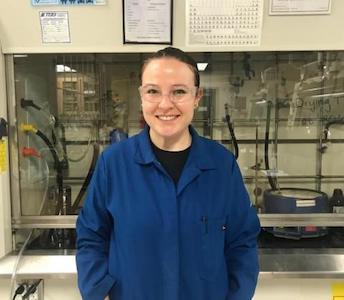Abstract:
The naturally abundant polysaccharides cellulose and chitin could provide a significant source of biomass for biofuel consumption if approaches to breakdown these species into commodity chemicals were more well-developed. Lytic polysaccharide monooxygenase (LPMO) metalloenzymes activate the strong C─H bonds (~95 - 100 kcal/mol) of these polysaccharides. Nature has evolved the ability to perform these thermodynamically difficult processes using an active site within LPMOs which is composed of a single copper ion coordinated to the protein in a T-shaped geometry referred to as the histidine brace. Inspiration from LPMOs has led to the development of synthetic systems to perform multi-electron chemistry using copper complexes. Toward this goal, a four-coordinate Cu(II) aqua complex with a redox-active ligand, (ibaps)3─ (N,N’-(azanediylbis(2,1-phenylene))bis(2,4,6-triisopropyl-benzene-sulfonamide), has been developed and investigated. The [CuII(ibaps)(OH2)]─ complex was prepared and ligand substitution to modulate the number of hydrogen bonds was pursued. Each of the four [Cu(ibaps)(L)] complexes (L = DBU (1,8-diazabicyclo(5.4.0)unde-7-ene), TBD (1,5,7-triazabicyclo[4.4.0]dec-5-ene), and TMG (1,1,3,3-tetramethylguanidine)) exhibits two oxidation events, both of which have been chemically accessed. This presentation will describe the synthesis, characterization, and structure-property relationships of these complexes.
Speaker:
Institution:
Location:

